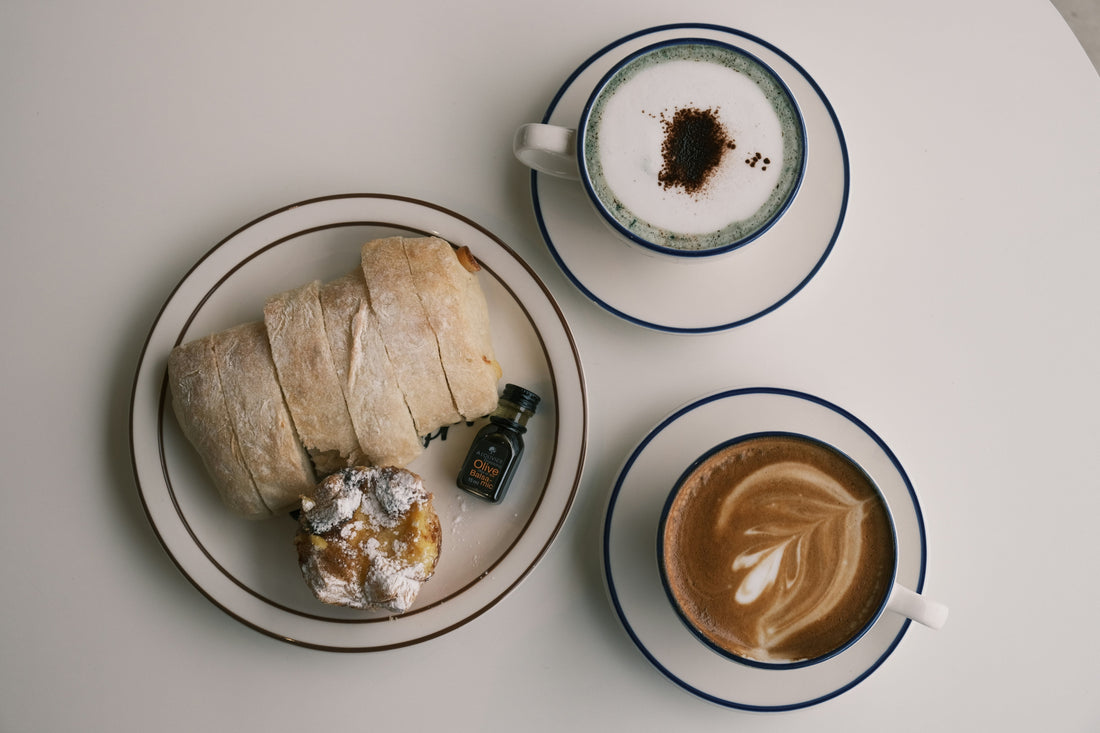
Korean Café Culture: More Than Just Coffee
Daebak InternsShare
Why Cafés Matter in Korea
If you’ve ever spent time in Korea, one thing becomes clear right away: cafés are everywhere. On almost every corner, you’ll find a coffee shop buzzing with life. But cafés here aren’t just places to grab a latte, they’re part of the country’s social fabric. Students, couples, friends, and even office workers use cafés not just for caffeine, but for studying, dating, relaxing, and creating memories.
How It All Started
Café culture in Korea began to grow rapidly in the 1990s and early 2000s, when big chains like Starbucks entered the market. But Koreans quickly made cafés their own, and now Seoul has one of the highest café densities in the world. What makes it unique is the creativity; cafés are designed as experiences, not just pit stops. Whether it’s a cozy neighborhood bakery café or a high-tech study café open until 2 a.m., there’s a spot for every mood.
The Everyday Cafés

Some cafés in Korea are so woven into daily life that people can’t imagine living without them.
- Study Cafés: Quiet, well-lit, and often open late, these spaces are designed for productivity. Students bring textbooks, office workers bring laptops, and everyone enjoys the atmosphere of focus with endless coffee refills.
- Dessert Cafés: Korea has a sweet tooth, and cafés are where it shows. From towering bingsu (shaved ice desserts) to fluffy soufflé pancakes and macarons, dessert cafés are as much about the food as the drinks.
- Chain vs. Indie: While chains like Starbucks and A Twosome Place are everywhere, many people prefer indie cafés for their unique interior designs and specialty drinks. Indie cafés often become local landmarks thanks to their distinctive vibes and Instagram-worthy corners.
Themed Cafés: Fun, Quirky, and Instagrammable
Of course, no talk about Korean café culture is complete without mentioning themed cafés. These are places that go beyond coffee and immerse you in an entirely different world.

- Animal Cafés: Cat cafés and dog cafés are the most famous, but Korea also has raccoon, sheep, and even meerkat cafés. Visitors can sip coffee while playing with animals,an experience that blends comfort with fun.
- Flower Cafés: Imagine stepping into a greenhouse with walls covered in blossoms, tables decorated with bouquets, and floral-themed drinks. Flower cafés are hugely popular for dates and photo sessions.
- LINE Friends Cafés: Based on the beloved LINE Friends characters, these cafés combine character-themed drinks, desserts, and merchandise. They’re especially popular with international visitors and fans of Korean pop culture. If you can’t visit in person, you can still explore Daebak LINE Friends box here.
- Photo Studio Cafés: Here, your latte comes with a side of professional photography. These cafés have mini photo booths or even in-house photographers, so you can walk out with framed pictures after your coffee.
- Experience Cafés: Escape-room style cafés, board game cafés, and VR cafés combine entertainment with drinks, turning the simple act of “going for coffee” into a small adventure.
These spots are part of what makes Korean café culture so memorable for visitors. It’s not just about taste,it’s about stories, photos, and playful experiences.
Why It Matters
So why are cafés such an essential part of Korean life? It comes down to connection and atmosphere. Apartments in Korea are often small, so cafés serve as extended living rooms. Friends gather there to chat, couples go on casual dates, and solo visitors enjoy a sense of company without needing to talk to anyone. For students and young professionals, cafés also provide a neutral space away from home and school where they can study, brainstorm, or just recharge.
Global Appeal
Korean cafés have also become part of Hallyu, the Korean Wave. Travelers often make themed cafés part of their itinerary, hunting down Instagram-famous spots in Seoul’s Hongdae, Gangnam, or Itaewon neighborhoods. Abroad, Korean-inspired cafés are popping up in cities from Los Angeles to London, often serving bingsu, dalgona coffee, or Korean-style desserts. The aesthetic,pastel colors, minimalist design, and photo-ready drinks has become instantly recognizable. For those who want to bring a taste of Korea home, you can also try CJ x Daebak snacks and goodies, which capture the same creativity and playfulness found in Korean café menus.

More Than Coffee
In the end, Korean café culture isn’t about caffeine at all. It’s about creativity, connection, and comfort. Whether you’re pulling an all-nighter at a study café, eating cake surrounded by flowers, or petting a corgi while sipping an iced latte, cafés in Korea are about building small, joyful moments in daily life. For Koreans, cafés are where life happens. And for visitors, they’re one of the easiest, most enjoyable ways to feel the rhythm of modern Korean culture.

